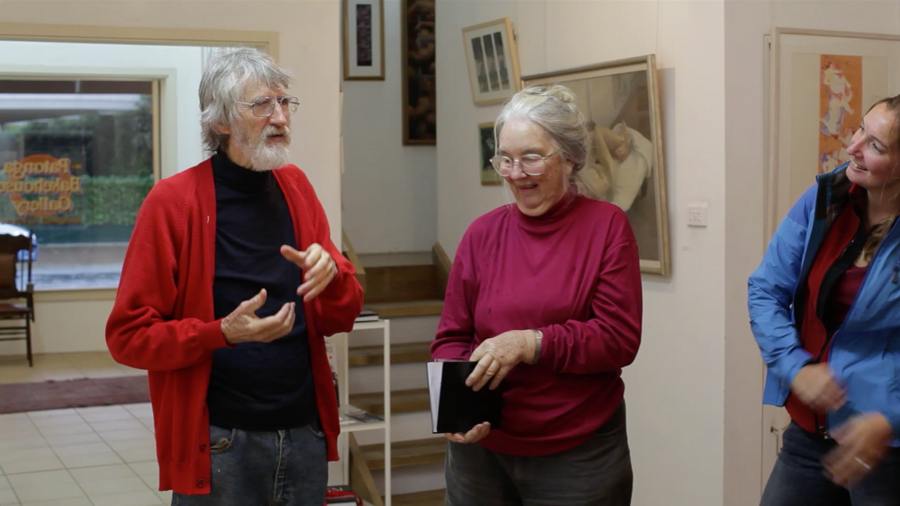Today, as I was remembering my dear friend, the artist Robin Norling, who died in January this year, I rediscovered the text of a wall panel that he and Jocelyn Maughan had prepared for their gallery a few years ago. I liked it so much I decided to post an edited version of it here.
Value, in terms of money, motivates the world. Having a high price gives an object prestige; it seems to focus the attention of the audience. To know that a singer has insured his or her voice for $1 million gives the media an angle for their story.
But this focus on the dollar is the wrong way to evaluate the world, and yet it has a powerful influence on our critical appraisal of art. Is there another way, if not money? What yardstick can we use to evaluate? With a stopwatch we can find the fastest runner, with a weighing machine we can determine the heaviest pumpkin, so what (if not money) can be the determinant of art?
The elements of a painting (such as line, shape, tone, colour and texture) are a good basis for starting up a conversation with the artist. It’s up to the artist to entertain, involve, intrigue and inform. It’s up to you as the viewer to be actively critical about the aptness of each of the elements.
To take line as an example: all shapes are made visible by having an edge, whether realistic or invented. That edge tells us about the quality of shape: sharp or fuzzy, nervously fussy or blandly simple. Whether the artist or viewer is conscious of it or not, that line is part of the communication. The viewer needs to isolate this element, not for its being part of anything, but for its qualities of ‘rightness’, sensitivity, intelligence, daring and so on. It’s been said that there are no lines (meaning outlines) in nature, so the observation of lines is an aspect of the ‘specialness’ of an art work. Lines divide and lines join, so insensitivity to its role will make a work either confusing or bland. Confusion and boredom are the extreme poles that the artist works between.
It is very hard to have an aesthetic experience in a pigeonhole (“Ivor Hele was a war artist.” “William Dobell was a portrait painter.” “Arthur Streeton was a landscapist.”) These easy classifications lock in the viewer. However subject matter is really a minor part of what a painting or drawing has to offer. How the art work utilises the pictorial means (line, tone, etc) to capture attention, to entertain and involve… that is the stuff of art appreciation.
Before you make a decision about a painting, before you say, “I like it” or “I don’t like it”, spend some time just observing. After you feel you have really ‘seen’, then react to what you have seen: are you delighted? Concerned? Angry? Dazzled? Bored? Then, in the critical stage, find what the artist has done to cause your reaction.
Enjoy as you would enjoy a stimulating and entertaining conversation. It won’t be the newness of the subject or the familiarity of the topic but the overall delight and persuasion of the artist that will give value to the encounter. Richness beyond dollars.
– Based on gallery wall text by Robin Norling and Jocelyn Maughan, Patonga Bakehouse Gallery, 2014
IMAGE: Robin Norling and Jocelyn Maughan at Patonga Bakehouse Gallery, 2013 (still from a documentary by Owen Norling & Indigo Norling Bennett)
